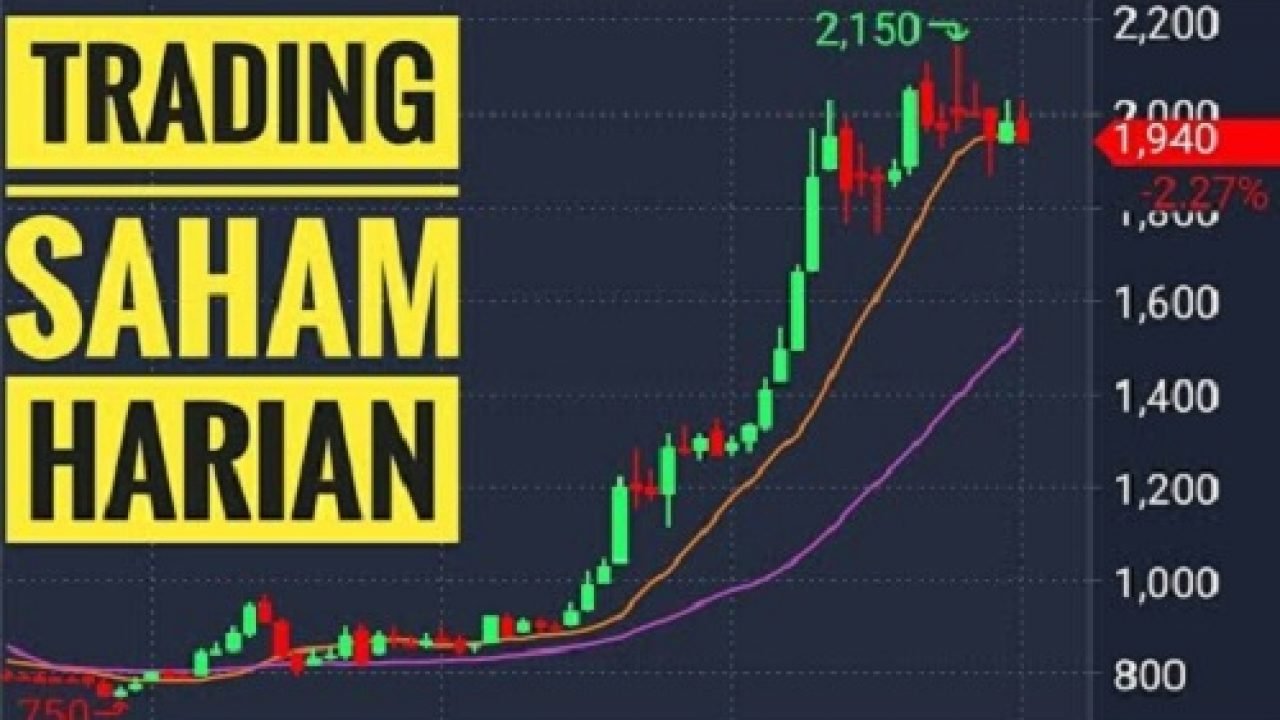Daily Stock Trading. Although both are related to stocks, you probably already understand that stock investment is not the same as stock trading. Stock trading is pragmatic in nature, much like a merchant’s mindset, actively seeking profit differentials from every buying and selling opportunity in front of them, including daily stock trading.
Daily stock trading has become a popular method or technique due to the potential for significant profits in a short period, even within minutes or seconds.
Because of the potential for substantial profits in a short time, many stock investors are willing to give up their employment status and focus on becoming daily stock traders. Now, if you want to venture into or try daily stock trading, it’s best to first review the following information before getting started.
What is Daily Stock Trading?
Day trading, or daily stock trading, is one of the stock trading techniques that have entered the realm of professionals. This technique involves buying and selling stocks within a single day. Investors can buy and then sell at higher prices, and short selling is not uncommon either.
In this technique, no stock is held for more than a day. Due to its active nature, day trading is used by investors who seek it as their primary source of income.
Day trading takes advantage of various events that can trigger stock price movements in a short period. Often, investors rely on news, especially economic and corporate conditions, which can influence sentiments in the stock market.
Due to the short transaction time, this trading technique heavily relies on high volatility in the stock market. Liquid stocks are also key because they can be freely sold without sacrificing the price.
Challenges in Day Trading
In day trading performance, a day trader uses the shortest time frame, rarely keeping stocks or transactions for more than 1 day, ideally opening and closing transactions within minutes to a few hours.
Therefore, the target profit for each transaction typically ranges from 3% to 7%, and day traders should not allow losing transactions to last too long because of the small target profit, meaning the losses should also be small, ranging from 1% to 3%.
The profession of a day trader is recommended only for a select few individuals with specific characteristics and not for everyone. Why? Here are the reasons:
- 1. Extremely Time-Consuming: A day trader must monitor market dynamics in real-time.
- 2. Small Profits: When implementing risk management, stop-loss ranges are easily triggered before the price increases again.
- 3. Significant Psychological Pressure: The emotions of fear and greed become more prominent, leading to disturbances in the trader’s focus on their system and making impulsive decisions based on emotions.
As a result, it can be concluded that daily stock trading has the smallest profit margins, often hits stop losses, and is more tiring.
Forex trading is more suitable for day trading because of its higher fluctuations. However, the three challenges mentioned above will still be faced in forex trading.
Supporting Tools in Day Trading
Day traders require software and tools that can support their fast-paced trading activities. Technical indicators play an important role, such as programs that can detect support and resistance levels directly.
Although technical analysis is crucial for day traders, you, as a trader, must also know how to read the stock market. Understanding this in combination with technical analysis is essential because indicators alone only show opportunities based on data.
Considerations for Day Trading
To achieve returns within a day, you need to buy and sell stocks frequently. Adequate capital is required for these high-frequency transactions, and day traders often use leverage or borrowed funds to increase their capital.
Frequent transactions also mean being subject to broker fees, which can reduce returns and become more detrimental if losses dominate your transactions. On the positive side, day traders do not worry about holding stocks for days. Losses can be minimized quickly as they monitor the market throughout the day constantly.
Techniques & Strategies for Sustainable Daily Stock Trading Profits
From the post-World War II era to the current digital disruption era, stock trading remains one of the best options for quickly making profits, attracting many enthusiasts worldwide, including in Indonesia. However, to succeed, a stock trader must understand the intricacies of this profession and the three trading techniques you can choose as your trading style.
1. Scalping Technique
Among retail investors, the scalping strategy is the most popular short-term trading technique, with a daily to weekly timeframe. Scalping traders generally use technical analysis by targeting a 5% profit and then immediately selling.
How to use this trading technique:
- To control fluctuations, traders must select Blue Chip stocks (LQ45) and diversify with a maximum allocation of 15% of the investment funds in each stock.
- With a standard ratio of 3% of the entry value, traders must implement a cut-loss strategy.
- Enter the market when the stock price is in the middle-low position, never at the top position.
2. Swing Trader Technique
When the market is in a sideways position, most traders use the Swing Trader technique. The timeframe for this technique can range from several weeks to several months. This technique usually employs the average down strategy rather than cutting losses, with a target profit ranging from 15% to 30%.
A Swing Trader is a trader who takes advantage of a stock’s price increase and opens and closes transactions within a longer timeframe than a Day Trader, typically from 1 day to several days, or even several weeks.
The average profit gain for a swing trader is around 5% to 15%. Swing traders face challenges similar to day traders but with less intensity, including:
- Shorter profit-taking periods.
- Narrow stop-loss levels that are easily triggered.
- Psychological pressure due to price fluctuations.
Swing traders use day trading strategies that focus on exploiting price bounces between support and resistance levels, which can also be applied in Forex Trading.
If you want to practice this technique, here are the steps you can take:
Make sure to select financially healthy companies issuing stocks in terms of fundamentals, including management and financial conditions.
Allocate a maximum of 25% of your capital to one stock and execute it in 4 stages, as follows:
- When the stock price is Rp1000, enter 25 lots (2500 shares) = Rp2,500,000.
- When the stock price is Rp800, enter 50 lots (5000 shares) = Rp4,000,000.
- When the stock price is Rp600, enter 100 lots (1000 shares) = Rp6,000,000.
- When the stock price is Rp400, enter 200 lots (2000 shares) = Rp8,000,000.
As a trader, you can customize the above figures according to your investment needs. The advantage of this technique is that you have measured and are prepared to face risks if the stock you chose suddenly drops by up to 60%.
3. Rally Technique
This technique uses the Trend Hunter strategy with the concept of Buy Low – Sell High. The key is to have patience and wait for the stock’s price to significantly drop before entering the market. Weekly and monthly candle charts will be used by traders for long-term analysis.
How to practice this technique:
- Enter the market during the maximum correction period of IHSG in June – August.
- Perform technical analysis using monthly candle charts and ensure that the price is at the Low Year to Date position.
- Over the past 5 years, this technique has been more effective when in a low position.
- Once you are confident in
selecting a stock, make an entry with Dollar Cost Averaging, with a maximum of 20% of your total capital.
Ajaib Introduces 30 Features in 30 Days to #BecomeAProfessionalTrader
Ajaib will help you #BecomeAProfessionalTrader by introducing various new features suitable for professional traders. Ajaib will launch 30 new features within the next 30 days. All these new features will provide a better, faster, and more reliable trading experience.
You can check out all these new features on the Ajaib website and all Ajaib Sekuritas social media accounts. Come and try the latest Ajaib features right now! Don’t forget to share your trading experience with Ajaib on social media and tag @ajaib_investasi to get rewards.






